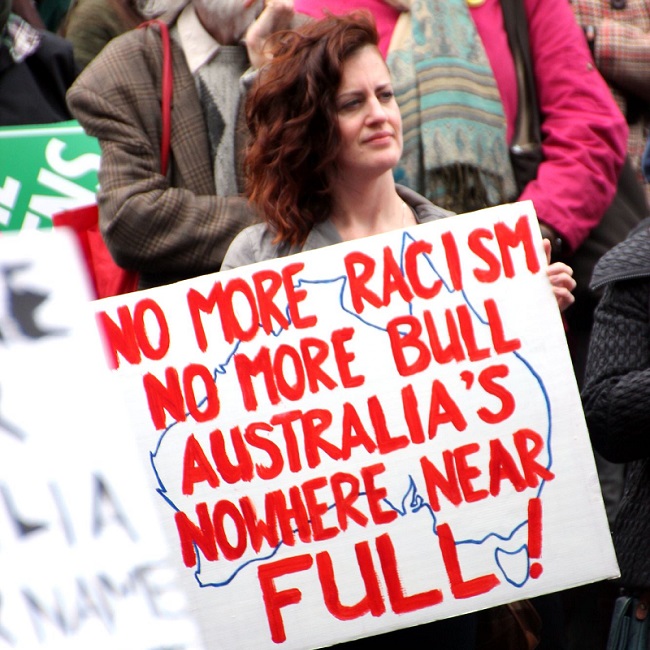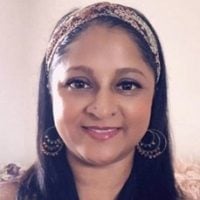I have many stories to tell.
But the one that burns within me is the story of “everyday racism.”
I’m writing this for the parents of colour who deal with some form of everyday racism that impacts both them and their children. I’m writing this for the migrant families who have uprooted their whole life for a better life, only to be confronted with hate speech and people who claim ignorance when they hurt you.
I am writing this for those who have never experienced racism in your lives and probably don’t know what all the fuss is about. It is okay—this article is for you, too. It is to help you empathise and be moved to the point that when you become aware of everyday racism you are willing to do something different.
This is also for those of you who unfortunately have family members who are inherently racist, family members who you have tried to move away from as best as you could. But it is those little jokes and comments at the dinner table that get you. No matter who you are, I want you to know that everyday racism is everyday trauma.
And we cannot be silent about it.
I was born in a country of gross human rights violations and a strong activism toward freedom, but everyday racism continued to exist in post-Apartheid South Africa. It felt like it was inescapable.
I migrated to Australia in 2013 as a Skilled Immigrant, which means that my qualifications as a psychologist in South Africa were assessed by the Australian Psychological Society to determine if I could immigrate under the Skills category. When you enter into the country as a skilled migrant, you enter into their Australian labour force and contribute to the economy.
Migration was a conflicted decision for me. I felt like I was turning my back on my country and all it stood for. But I had an eight-month-old baby girl with me and somehow that transcended a lot of the internal conflict. I arrived hopeful that I could give her an opportunity to grow up without being defined by her gender, and—more importantly—her skin colour.
A better life—that is the expectation when people uproot and move and start again.
Instead, I started learning that all was not well in paradise. It seemed like “The Promised Land”—“The Lucky Country”—was only for some and not others. Everyday racism was amplified and more challenging to digest here. The things I heard were astounding, and I often felt more in shock than anything else. I struggled quietly, wondering, “How am I going to do this?”
Australia, like many countries, denies their racism. We don’t fully understand or accept responsibility for our tragic and traumatic creation of the “Stolen Generation” for Aboriginal people. Statements like, “You get everything paid for if you’re Aboriginal. The rest of our people have to struggle and work,” attests to that.
Pauline Hanson, a political leader of the One Nation Party, spoke about Aboriginal parents as being behind their children’s poor school attendance: “Whose fault is that? Lazy parents. You can’t blame the whites when it is your own negligence.”
There are many Australians who support this position, much like Trump has his support.
The White Australia Policy for Immigration spanned the years of 1901 to 1973. This policy aimed to forbid people of non-European origin from migrating to the Promised Land. Whilst it ended, it didn’t prepare those migrants for the everyday racism that would follow. But these policies are not unique to Australia and are often practiced on a wide scale in many countries.
I watched a YouTube video, titled “Voice of the People: The White Australia Policy (1962),” where people were interviewed about their feelings about allowing or not allowing “coloured” or “mixed race” people to enter the country. The majority supported the continuation of the policy:
“I think it is good and they should really have it and keep out the coloured races.”
“When a coloured race comes into the country, then they want to intermarry and I don’t think it is fair on the children.”
“We are well off here. We can’t have anything else but a white Australia policy.”
“We should keep our country as white as possible and stick more to British migrants.”
“I wouldn’t like to see our place overrun by all these other nations.”
“It could be dangerous.”
“Keep all the Niggers and the Japs out. We can afford not to have them.”
As Australians, this is our history. We cannot play ignorant and say we are not political or racist. Because our friends who migrated to this country are experiencing this same history. How can we remain silent while others have to deal with this?
Yes, we may not be directly responsible, but we are responsible for creating a society of inclusion, belonging, and tolerance.
I am still stung and even shocked when people say things like, “I love your dark skin, and how your eyes look so big and scary when you look at me.” How can you compliment my skin colour and then tell me I look scary? Your ancestors were fearful of darker skinned people, and it seems not much has changed. But I’m no monster.
I’ve also heard, “If you weren’t sitting under the light, I wouldn’t be able to see you.” I am from Africa, where some people have skin described as “blue black,” and I’ve never considered myself so dark that you need a spotlight to see me.
Then there’s this line: “That head tilt is such an ‘Indian’ thing to do.” I am South African—I don’t have a traditional Indian accent or shake my head when I speak, which, just so you know, is an often-used stereotype. But you choose to stereotype us into one group of people. You refer to us as “jungle monkeys,” and imitate, mock, and laugh at us. Because of course we’re all the same, right?
I’ve often heard, “Are your qualifications on par with ours? Well no, actually we are better.” Is my acceptance by the Australian Psychological Society not enough to give credibility to my qualifications or are you so arrogant that you believe Africa can’t produce competent, educated professionals? As an immigrant, I have to work harder to prove my credibility among my fellow professionals—as if studying here in Australia automatically gives you credibility.
Another one is, “You speak such good English. I’m so impressed.” Talk about condescending! Do you assume that every immigrant cannot speak English? I’m bilingual. I speak English (my first language) and Afrikaans (my second language)—both the language of my oppressors.
When I talk to my seven-year-old daughter about skin colour, she often says she knows she is different and sometimes that feels good, but sometimes it feels bad. “You know Mum, most children say I am Aboriginal because I’m brown.” In summer, she browns even more and I was told by a “friend,” “How can you let her get so burnt? She looks dark, like an Aboriginal.”
Why is that a bad thing?
We have been citizens of Australia for a year now. But as a parent of a child who is not white, I have so many concerns for how her identity will shape her experience, and how many children of colour will start to see themselves against a white majority who determine what beautiful is for women—which is mostly blonde hair and blue eyes.
Yes, I have amazing friends in Australia—and I’m sure most of us have the same wherever we live—but I want to encourage even them to become aware of everyday racism. Because whether it’s subtle or overt, it feels like rejection and trauma for those of us on the receiving end. It impacts our mental health and creates distress. It impacts how we see ourselves in the world.
My daughter should have the opportunity to see herself like yours does—with the belief that she has a voice and her colour is not a limitation.
What can we do to address everyday racism?
>> The Everyday Racism app, developed by the University of Western Sydney (UWS) and The Challenging Racism Project, scooped up second place in a United Nations award in 2014. The app challenges people’s ideas about racism by giving them the chance to walk in the shoes of someone subjected to abuse on a daily basis, so we can fully empathize with their experience. It is a resource for anyone who wants to learn more and do more. I would recommend that anyone who can download it, does.
>> Visit the Share our Pride website by Reconciliation Australia, which aims to “inspire and enable all Australians to build relationships, respect and trust between Aboriginal and Torres Strait Islander peoples and non-Indigenous Australians.” For those who live somewhere other than Australia, seek out organizations that allow you to give back to those who experience racism and discrimination on a regular basis.
>> Learn to talk to your children, friends, and family about inclusion and accepting differences.
>> Recognize the people in your life who see beyond your colour and have included you in their families. And to those people, please do more of this. The world needs more beautiful people like you.
>> At work, listen for discriminatory speech and don’t leave it up to ethnic minorities to speak up. Sometimes, we are too frozen in shock to respond.
>> Include. Include. Include. Your lives will be forever blessed with a richness of love and warmth you never imagined possible.
There’s an emphasis on using our voices to say that racism is not okay and will not be tolerated. Nothing has ever changed by being silent. We can all use our gentle but firm voices, whether we are directly impacted or not.
I have a voice, but it’s a voice I want to use effectively to promote awareness and to gently move toward a society of tolerance. If this article caused you any discomfort or caused you to feel defensive, please know that I wrote it as honestly and as mindfully as I could. I urge you to use your feelings as an opportunity to learn.
Please join me and let’s give all our children an equal chance to a better life and a more mindful and connected society—after all, we belong to each other!
~









Read 17 comments and reply